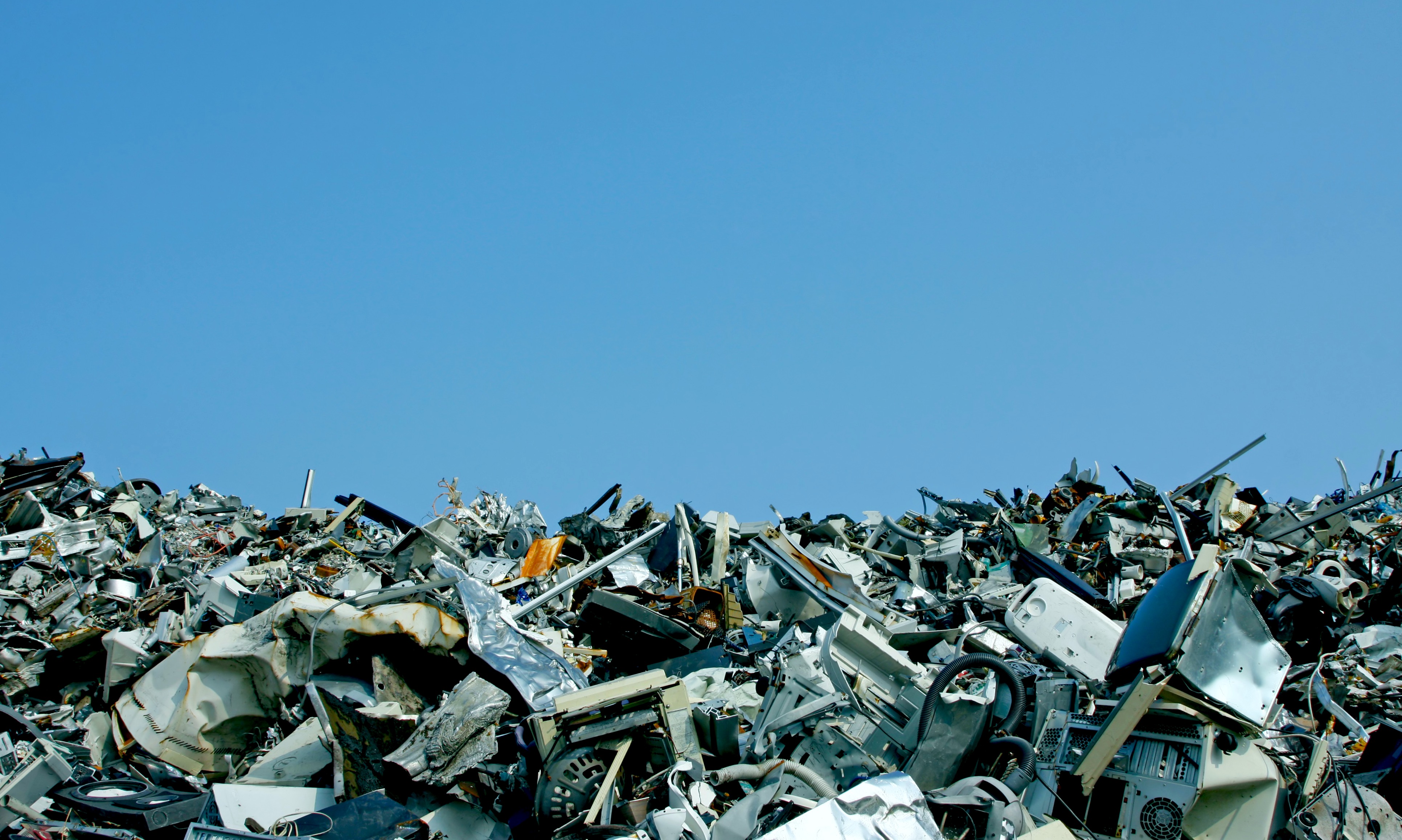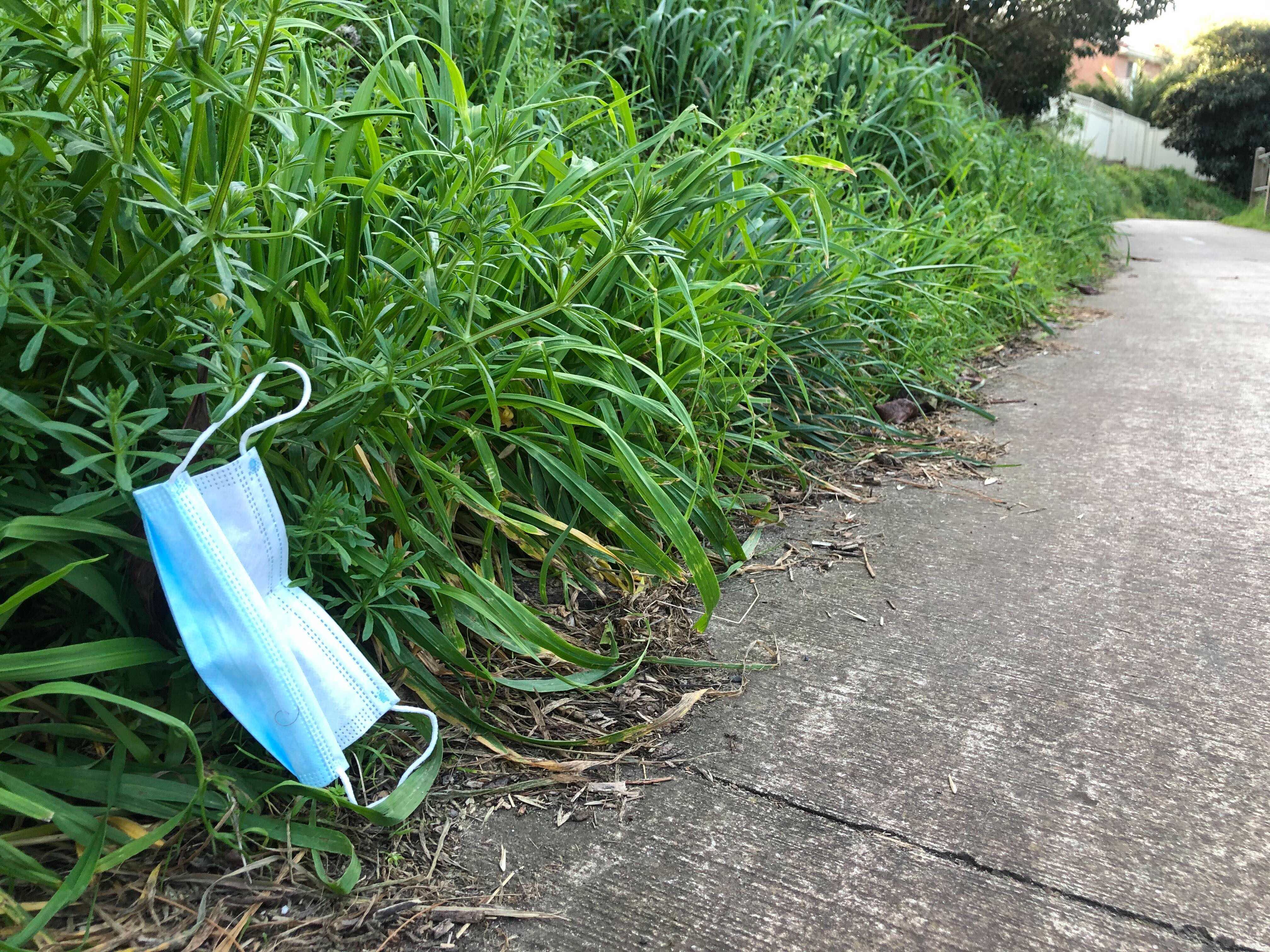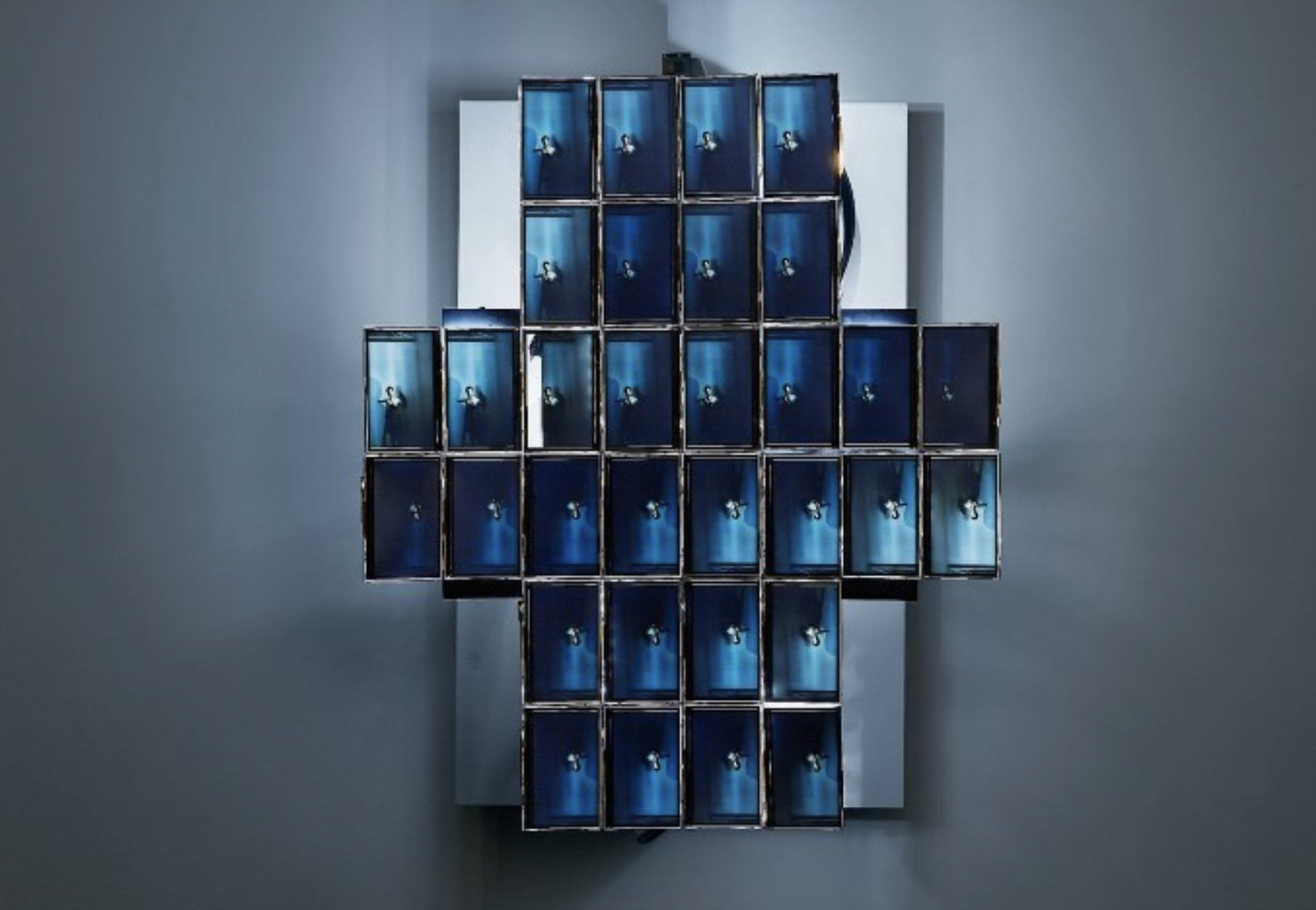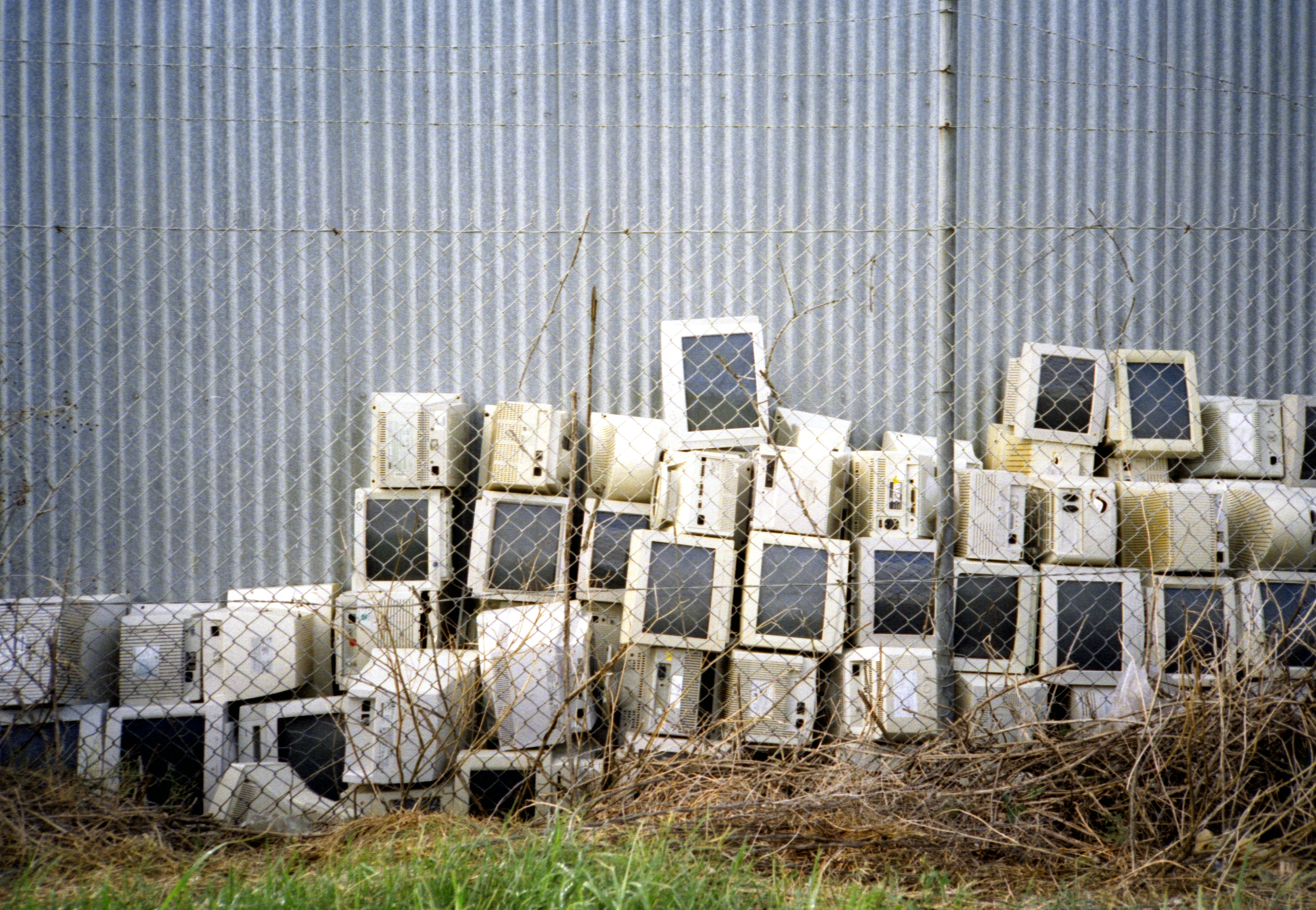
Arts & Culture
Exploring the most unknown universe

Could artists, designers, scientists and engineers working collaboratively to tackle over-consumption save humanity from itself?
Published 14 January 2021
2020 was a rough year to be reflecting.
It seemed to be the worst of times, but the reality is that in years to come, it may evoke a sepia-tinted memory of the ‘good old days’, before the full effects of our over-consumption spiralled out of control.
The world is a bin fire. We’ve been living beyond our means for a while now.

Is the pause of a global pandemic a moment in time begging for us to take a good hard look at ourselves, what we want to celebrate and how we want to shape the future? If so, we have a lot of work to do in reimagining how to live, and it will require a complete reworking of the way things are - something Dale Hardiman and Stephen Royce’s Open Garden: Digital Mirror 2020 gives us the space to reflect on.
Part of this reimagining is to consider the breathtaking scope of our throwaway culture.
At a time when the most googled phrase is ‘how to make a face mask’, it feels right to question this cultivated consumer culture and rethink what is usually categorised as ‘waste’.

Arts & Culture
Exploring the most unknown universe
Collaborative practice between the arts and the sciences can lead the way, and force us to rethink our consumerism and our role in creating waste. It can also forge innovative new ways of using that waste.
E-waste is a great place to start when you want to think about wastefulness.
Planned obsolescence and people’s thirst for the next new thing in technology have resulted in a huge glut of electronic waste that is now threatening our planet and health as a species. Last year, around 50 million tonnes of e-waste was thrown away.
Mind-boggling.
Much of that e-waste is made up of incredibly complex pieces of technology that are difficult and costly to recycle, so these precious and energy-intensive resources often go straight to landfill.

And the system is even more cooked.
Through the design of their phones’ physical components as well as software, companies strongly discourage altering, re-using or repurposing the technology.
They deliberately create products in ‘walled gardens’, the term for the closed system in which the creators, not the users, control all operations. Reprogramming, ‘jailbreaking’ or hacking the technology to repurpose or recycle can be incredibly challenging.

Politics & Society
Holding a black mirror up to artificial intelligence
Open Garden: Digital Mirror tears down the barriers around the iPhone walled garden and transforms them into a new and functional material, turning the screen into a new, bendable light-source.
The iPhone 8 was selected as the base device, as it is one of the most popular and highest-selling phones to date.
The process Hardiman and Royce went through to produce Open Garden: Digital Mirror is a delightful tale – with just the right amount of initial bravado, determination and interdisciplinary collaboration.
They would never have attempted to create this reclaimed light if they’d fully understood the barriers that lay ahead.
To make the work, the designers needed to source used and broken phones, which was unexpectedly difficult. In one anecdote, they recalled how they were treated with suspicion at best, and disdain at worst, by phone repair shops.

They eventually convinced one store owner to hand over a broken phone, which the owner reclaimed directly from the bin in front of them and brazenly charged them twenty dollars for – an eye-watering example of how quickly trash becomes valuable once a demand is created by capitalising on capitalism.
Hardiman and Royce scoured online forums, consulting engineers far and wide. After creating hacked chips, they had them hand-soldered to each device, finally enabling control of the LED screens. The final product is beautiful in its exposed complexity.
Through collaboration, these designers and engineers turned the closed system into an open garden. A place to explore, experiment and repurpose, transforming ‘waste’ materials into new products with new function and life.

And, importantly, the viewer is held in the electronic gaze of the work, capturing a big part of the problem from thirty-two perfectly lit sides.
Oh sure, you look fabulous in the warm hypnotic glow. But your desire for the next new thing is choking the planet and all its inhabitants.
The work contributes to the growing chorus of voices revealing structural and systemic problems that exist around us. These voices ask us to consider the tacit approval we give to wasteful practices by participating in them, and what we agree to or turn a blind eye to.
We have to keep removing barriers to thinking, designing and imagining waste out of landfill and into new materials.

Professor Veena Sahajwalla is a materials scientist who is also focused on innovative recycling of e-waste at a larger scale. She and her team at the University of New South Wales have developed techniques to transform complex mixed-waste products from mobile phones into re-usable, valuable materials for industry to use, meaning industry reliance on mining for those compounds is reduced.
These advances and connections with industry are critical to our overall success in tackling waste, as is connecting to arts practitioners on other projects, in order to bring research out of the lab and into the wider community.
Rethinking waste certainly isn’t confined to rethinking technological waste – creative problem solvers can reimagine even the most taboo, often-ignored waste systems.

Sciences & Technology
Does the smell of blood make us hungry?
In 2019, artists Gaspard and Sandra Bébié-Valérian collaborated with University of Melbourne chemical engineer Professor Peter Scales to reimagine a waste product from the human body: urine.
Their creation, Urinotron, asked why we literally flush away this extremely valuable resource.
The work transforms contributions of organic waste from visitors into power for mobile phones, before recycling it back to pure water.
Urinotron combines a bold idea, scientific equipment, engineering skills and reams of electronic wires in an artistic equivalent of an alchemist’s workshop, producing a different kind of gold.

This is an ideal example of how to use and reimagine our resources to drastically reduce our impact on the world around us.
Artists, designers, engineers and scientists can transform how we consume and push us to consider what has value. By working together, the sciences and arts are able to tackle problems from multiple sides, revealing creative solutions to the world’s greatest challenges.
Collaborations, innovations and works like these force our gaze away from our infinite scrolling, and focus our attention on the waste and destruction we leave in our wake.
The solution is clear. The final collaborator needed is basking in the glow of the reclaimed screens. You.
This article is an edited extract titled “Reimagining waste” first published in the NGV Triennial 2020 publication by the National Gallery of Victoria, Melbourne. The University of Melbourne is the proud Research Partner to the NGV Triennial which runs to 18 April 2021.
Banner: Getty Images